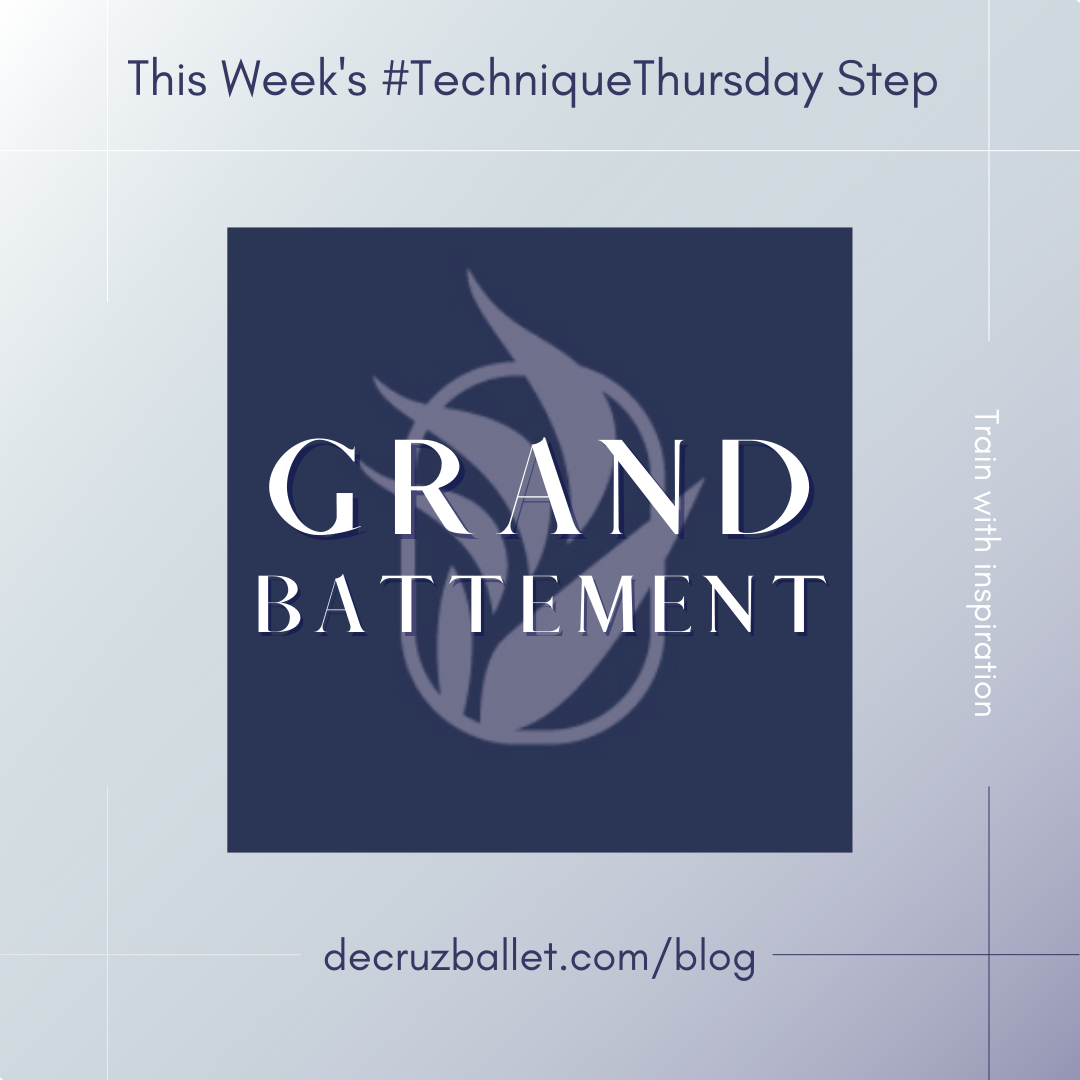Grand Battement
Grand battement
Grand Battement, meaning “large beat” or “large battement” is commonly the last combination at the barre and acts as an important preparation for grand jetes, sissones, tour jetes, and big jumps in general. In a grand battement, the working leg brushes along the ground the same as a jeté (or dégagé), then continues to a maximum height where alignment can still be maintained. The maximum height of a grand battement is completely individual to each dancer though, so it’s important to learn what height you can battement your leg while safely maintaining technique and placement. Grand battements can be done to the front (devant), side (à la seconde), or back (derrière), and sometimes as a brush to the front and back in the same movement (en cloche).
Because grand battements are such a quick and demanding step, the standing leg can easily be pulled out of correct placement when the leg travels upward. Pay attention to pulling up the standing leg and stretching through the whole leg. It’s useful to imagine the supporting leg lengthening even more as the working leg goes up to prevent sinking into a bent standing leg. Grand Battement is easily misinterpreted as a kick or a throw, making it hard to maintain turnout and technique through the step. In fact, it is necessary to maintain significantly more control than if you were to just kick the working leg up, both for safety and technique through the step. Instead of just allowing gravity to bring your leg to the ground, it’s important to control the path of the leg as it descends. A good image to keep in mind when the leg travels back down is to feel like you are trying to make the most stretched position possible, with energy reaching out through your toes the whole distance to the tendu position.
One of the most challenging directions for a Grand Battement is to the back (derrière). Because you are lifting your leg so quickly to a high arabesque, it’s very hard to keep the upper back squared and not leaning to the working leg side. A useful tip is to think of your working leg shoulder and upper back staying lifted (without the shoulder going up too) and lengthening forward and away from the working leg as it travels up, making space in your lower and middle back. This will give your leg more space to grand battement while simultaneously keeping your upper body as lifted as possible.
For closing a Grand Battement into fifth or first, keep in mind the technique you would apply to closing a tendu. If you haven’t read our previous Technique Thursday post on Tendus yet, this is a great time to catch up! While Grand Battements are a challenging step, they are ultimately extremely useful to your dancing!
Have a wonderful Technique Thursday!

